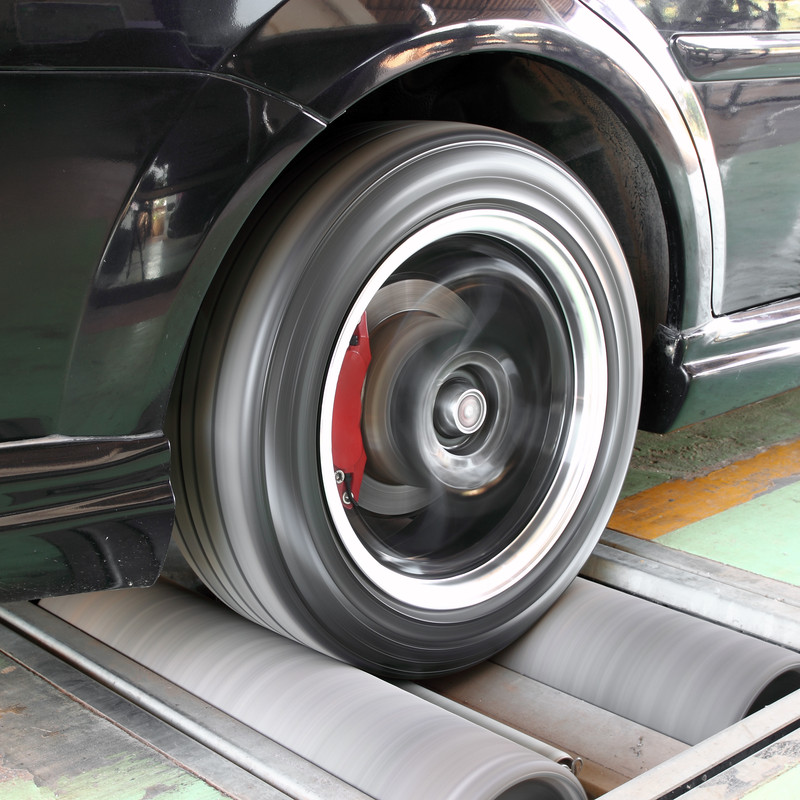Have you ever tried to sleep when a faucet was dripping in the other room or with an unbalanced fan making clicking noises as it hits interference when it runs? These obnoxious noises are difficult to ignore when you are trying to get a good night’s sleep but at least you can easily repair the leaky faucet or even turn off the fan to get some rest. When you are driving your car you do not have the luxury of trying to fix an annoying noise while you are driving. If a design engineer has not done proper vibration analysis and noise testing then you could be faced with miles of rattles, vibrations and annoying noises that make your trip unbearable when you are driving. Noise, vibration and harshness (NVH) plays a huge role in the decisions all engineers make in the automotive industry.
Engineering the ultimate driving experience
Designing an automobile is not just about then engine and drive train; there are many other considerations such as the comfort of the driver and the passengers, the ambient noise, safe levels of vibration and the overall experience within the vehicle. Automotive engineers strive to design the interior compartment so that the driver has the ultimate driving experience each time they drive the vehicle. It doesn’t matter if you purchase a low end economy car or a high end luxury car the customer expects a smooth, quiet ride from their vehicle.
Designing the best experience can be subjective because it depends on the end customer who purchases the vehicle. Each person is built differently and has a different view of the world. “Comfortable” is a subjective term so determining how to measure comfort becomes a problem. Automotive engineers have tried to put a measurement system in place to gauge what type of experience the driver and passengers will eventually have when they purchase the vehicle. They establish noise levels that are acceptable to the average person and then work to exceed these goals in the vehicle design.
Tools of the trade
 There are numerous tools that automotive engineers use to measure the amount of noise and vibration in a vehicle including microphones, accelerometers, load cells, force gauges, dynamometers and even anechoic chambers for smaller components. Microphones and anechoic chambers are used to measure sound levels while the remaining NVH testing tools measure force, impact and vibration. Additionally, to aid in identifying sources of vibration automotive engineers will use laser scanning vibrometry. This tool measures vibration of an entire body and will scan over the entire body of the vehicle looking for any spatial movements on the surface. This powerful tool finds more minute areas of vibration which may not be discernable using less sophisticated techniques. Automotive engineers use all these tools to reduce NVH in their vehicle designs to make sure the customer will have the best driving experience possible.
There are numerous tools that automotive engineers use to measure the amount of noise and vibration in a vehicle including microphones, accelerometers, load cells, force gauges, dynamometers and even anechoic chambers for smaller components. Microphones and anechoic chambers are used to measure sound levels while the remaining NVH testing tools measure force, impact and vibration. Additionally, to aid in identifying sources of vibration automotive engineers will use laser scanning vibrometry. This tool measures vibration of an entire body and will scan over the entire body of the vehicle looking for any spatial movements on the surface. This powerful tool finds more minute areas of vibration which may not be discernable using less sophisticated techniques. Automotive engineers use all these tools to reduce NVH in their vehicle designs to make sure the customer will have the best driving experience possible.
Noise, vibration and harshness in automotive engineering
Noise, vibration and harshness are considered some of the biggest challenges that automotive engineers face in the industry and are one of the biggest customer warranty complaints. The Society for Automotive Engineers (SAE) has a series of training courses focusing on key areas within the automobile that contribute to the issues that customers report with their vehicles.
Reducing braking noise
One of the biggest focuses in the automotive industry is braking design to reduce noise during braking since one of the biggest customer complaints about their vehicles are of grunts, squeaking, squeals and groans during braking. Automotive engineers work with the entire design team including materials, physicists and even electrical engineers to identify the location of noises within the braking system and find ways to eliminate vibration, reduce noise and friction. The NVH testing team measures the noise produced by each design, characterizes its performance and then engineers ways to make the entire system perform better.
Leveraging muffler design expertise
Another common customer complaint in the automotive industry is muffler noise when driving. There has been considerable work done in this area by different engineers and the industry has moved to a two-port approach to the muffler that reduces the overall noise. Automotive engineers will do acoustic simulations of muffler designs to determine how they will perform in a vehicle and make changes in the early design phases to make the muffler system as quiet as possible. Additionally, the design team will look at the entire exhaust system that feeds into the muffler and how engine performance during operation will impact noise levels.
Designing the quiet powertrain
 Unless you are rebuilding an old muscle car you probably prefer your vehicle to operate quietly and not overly anger people that you are approaching. A key area that automotive design engineers analyze for noise is the entire vehicle powertrain. The engine and all the components that it connects to are the biggest contributor to the overall noise of the vehicle. Noise output is measured from the engine, transmission, exhaust, gears, couplings, and joints within the system and the design team looks at different materials, designs and interfaces that can reduce the overall noise output for the entire system.
Unless you are rebuilding an old muscle car you probably prefer your vehicle to operate quietly and not overly anger people that you are approaching. A key area that automotive design engineers analyze for noise is the entire vehicle powertrain. The engine and all the components that it connects to are the biggest contributor to the overall noise of the vehicle. Noise output is measured from the engine, transmission, exhaust, gears, couplings, and joints within the system and the design team looks at different materials, designs and interfaces that can reduce the overall noise output for the entire system.
Creating a comfortable ride for the driver and passenger
The design & NVH testing team looks at the entire vehicle and works to reduce noise creation but there will still be some noise being generated during driving. Additionally, there are noise from the road, traffic and other vehicles that can contribute to the sound level inside the vehicle while it is being driven. Automotive design engineers and the entire engineering team measure the noise that the driver experiences and designs the interior with absorption materials that block the sound from entering the driver compartment. These sound barriers block external noise and allow the driver and passengers to ride in comfort and listen and speak uninterrupted.
Noise, vibration and harshness are a very large part of the automotive design engineering job description and impact all areas of vehicle design. Each design team must look at their area individually and then how it fits within the entire vehicle body design to reduce the overall noise being produced by the vehicle and work to eliminate it where possible. Finally, the driving compartment is designed with barriers to external noise and creating a cocoon of comfort for the driver and passengers to ride in comfort.


Comments 1
Do you have instrument(s), that is apps to use on cell phones to detect vibration sources on older modified cars and trucks? I saw a youtube, of one of your apps to a cell phone, but it was used on a late model car, ie, 2012 or approximately that year.
If an old car does not have the original size engine, tires,, transmission, differential ratio, and such do you have an instrument (cell phone app) in which the larger component and accessories can be typed in and still obtain useful and accurate results?